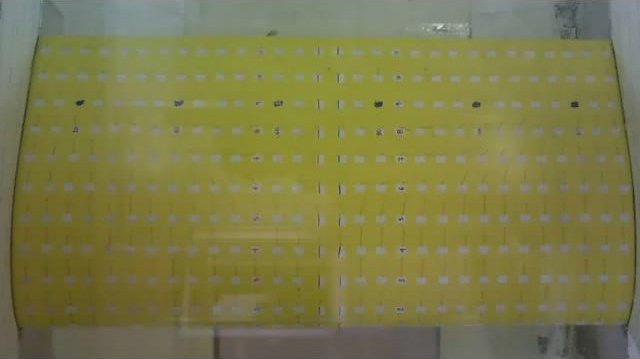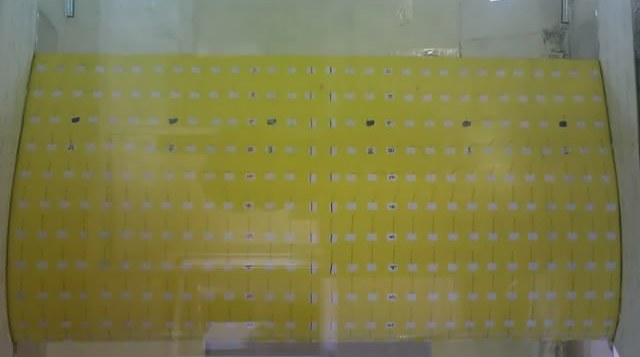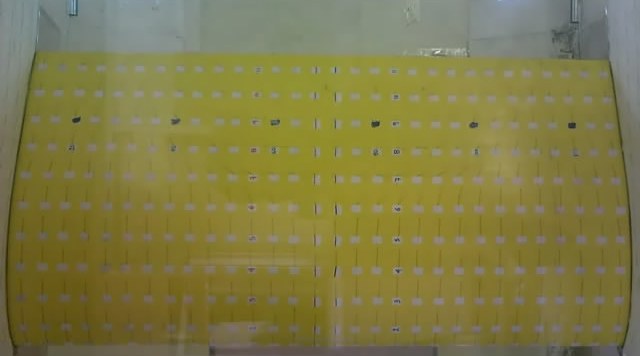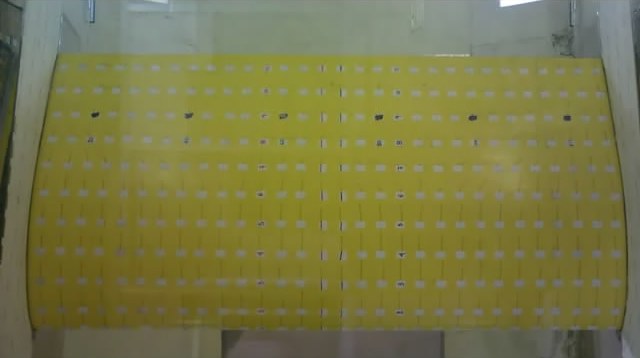Stall cells are a classic example of nonlinear behavior, hence high sensitivity to initial and boundary conditions can be considered intrinsic. This means that small changes in the contour of the section or in the surface roughness can have a substantial effect on the results. Initially a clean surface model was tested. However, the spanwise instability of the cellular structures was evident either by the spanwise movement of a single structure or by the formation and destruction of one or more cells in a seemingly random manner. Similar behavior was reported by (Winkelman, et al., 1980). Tripping the flow along the span, did not remove the instabilities it actually made them even more pronounced.
Flow visualization of 3D separation on a plane rectangular wing
In an effort to better understand the aspect ratio and Reynolds number effects on the stall cells it was attempted to remove other instabilities. The flow was tripped on the wing for only a small amount of its span thus introducing a fixed spanwise perturbation. The result was that an unsteady, but stable stall cell would form at the centre of the wing span.
Three different Reynolds numbers, 0.5x106, 1.0x106 and 1.5x106, and two different aspect ratios, 1.5 and 2.0, were tested. Only some representative results are presented below but videos and photos from the full test matrix are available upon request. In all the videos and photos that follow the flow is from bottom to top.
Unstable cases
| ● | Two stall cells, AR: 2.0, Re: 1.0 million, á=11.0ï |
Free transition case
In this case two stall cells are formed on the wing surface. They move laterally jostling each other. Every now and then one of the two stall cells is destroyed and the remaining one grows, dominating the flow. Then the second cell is formed again and the jostling continuous. No distinct frequency for the phenomenon was observed.
Partially tripped case
A single stall cell is formed. The vortical structure is unsteady but stable

| ● | Single stall cell moving lateraly, AR: 2.0, Re: 1.5 million, á=8.0ï |
Fully tripped case
Partially tripped case
This fully tripped case is a typical example of a single stall cell that moves in the spanwise direction in a seemingly random manner.
A single stall cell is formed. The vortical structure is unsteady but stable


